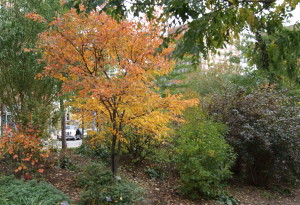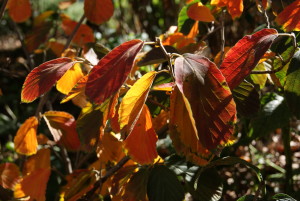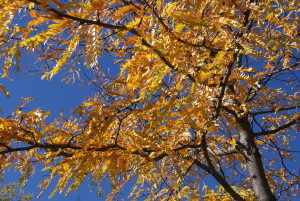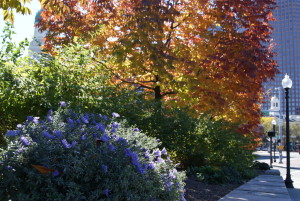The autumn color on The Greenway is approaching its peak. Each year I watch certain species for their change from green to some version of spectacular. This week the Amelanchier (shadbush) are in gear! Last week their leaves may have been a dull green with some yellow showing through. Now they are a splendid, rich, gold-burnt orange. The other trees I watch, and wait for, are the Acers (maples) and the Nyssa (black gum). All are native to Eastern North America, and New England, and all are reliable show stoppers this time of year. Please enjoy this write up of Fall Color contributed by Micheal Pistininzi , one of our wonderful staff Horticulturists.
Here in Boston we experience a slightly later shift in the season than other parts of the state. Our proximity to the bay as well as our urban landscape delay the fall colors which are at peak through most of New England this time of year. Most deciduous trees and shrubs will shift colors and drop their leaves as they prepare for the harsh winters. The colors we see are a result of the loss of chlorophyll, which is green, within the leaves themselves which allow us to see the pigments of other plant compounds present in the leaves. Leaves will start changing from the outside of the leaf inwards towards the veins and are usually signaled by the shorter daylight present each day.
The golden yellows and oranges we see are a result of carotenoids. Carotenoids give that yellow and orange color to carrots, daffodils, corn, and other similarly colored flora. We see these hues in maple, birch, aspen, sassafras, and many other hardwood trees typical to the New England area as they turn color. The red and purple colors are a result of anthocyanins present in the leaf. Anthocyanins are present in other red fruit like strawberries, cranberries, and plums. These colors we often see in maple, oak, dogwood, and sourwood species. Be sure to come by the Greenway soon to observe our changing foliage. Shrubs and trees have already started the shift!







